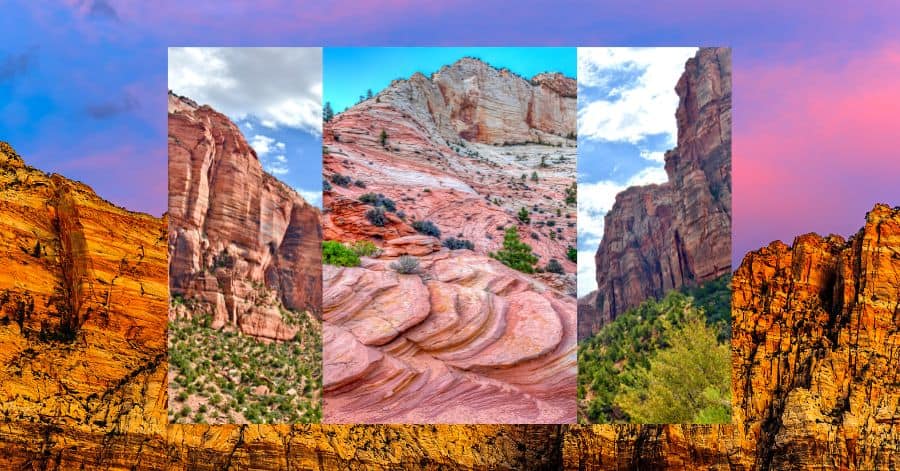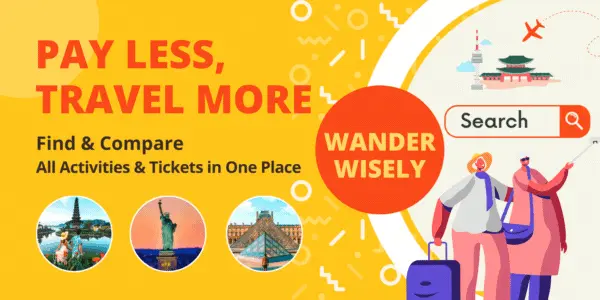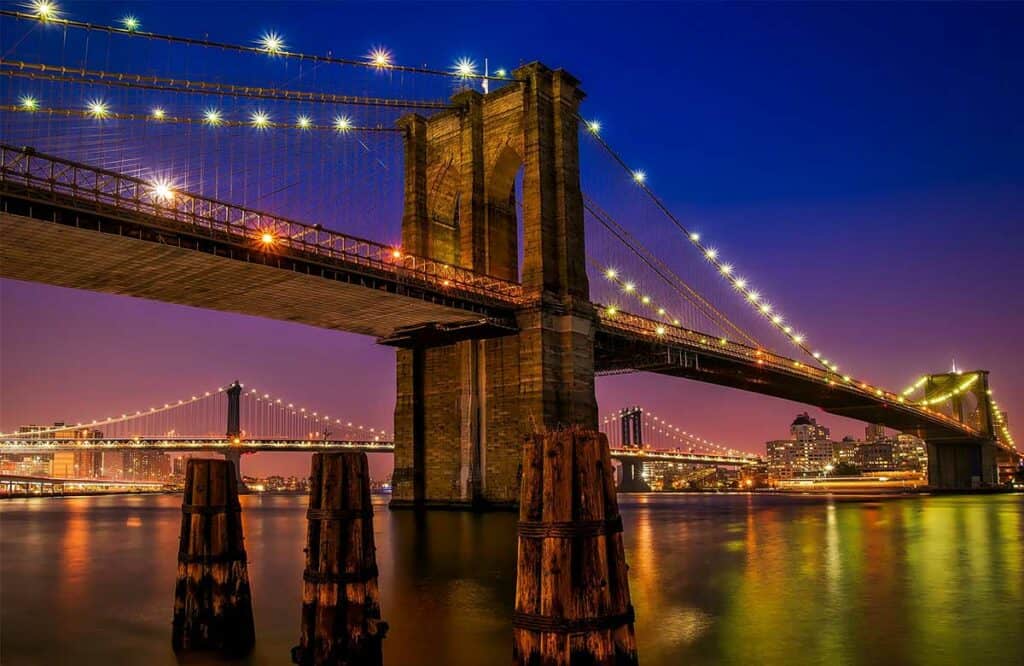Zion National Park, located in the southwestern corner of Utah, has incredible beauty and natural wonders. Spanning over 146,000 acres, Zion is famous for its towering sandstone cliffs, deep canyons, and lush valleys. The landscape, shaped by the Virgin River over millions of years, is a stunning masterpiece that draws millions of visitors each year. This guide will give you the lowdown on everything you need to know about Zion National Park – its history, how to visit, what to do, and some handy tips to make your trip awesome.
Read also:
- Best St. Thomas Excursions, US Virgin Islands Tours
- Things to Do in the US Virgin Islands
- 12 Best things to do in Dallas, Texas, for a Memorable Trip
- Top 17 Attractions in Houston for the Entire Family
Zion National Park General Information
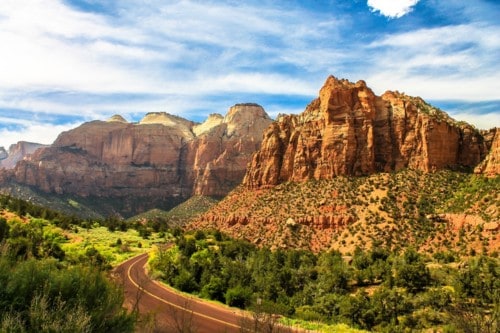
Zion National Park is located within the Colorado Plateau, known for its unique and colorful rock formations. The park’s signature features are its towering Navajo Sandstone cliffs, shaped over millions of years by sedimentation, uplift, and erosion. The cliffs shoot over 2,000 feet above the canyon floor, showing vibrant reds, pinks, and whites—a stunning contrast against the deep blue sky.
The Virgin River, a seemingly gentle waterway that flows through the heart of Zion Canyon, has been the primary force behind the park’s dramatic landscape. Over time, the river carved deep gorges and narrow slot canyons, some just a few feet wide. This created a rugged yet serene landscape with desert scrub at the base and lush forests on the plateaus.
Zion has several different areas, each with its unique scenery and experiences:
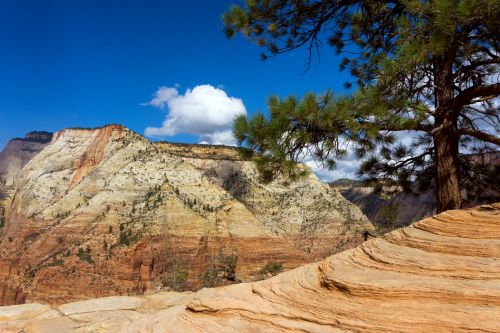
Zion Canyon: This is the park’s main attraction. It is home to some of its most iconic landmarks, including Angels Landing, The Narrows, and the Emerald Pools. The canyon is accessible via the Zion Canyon Scenic Drive, parallel to the Virgin River. During peak season, the scenic drive is closed to private vehicles, and visitors must use the park’s free shuttle system to explore the area.
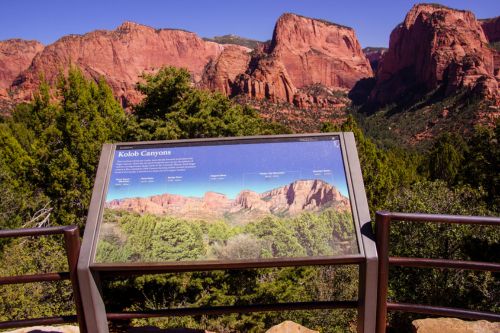
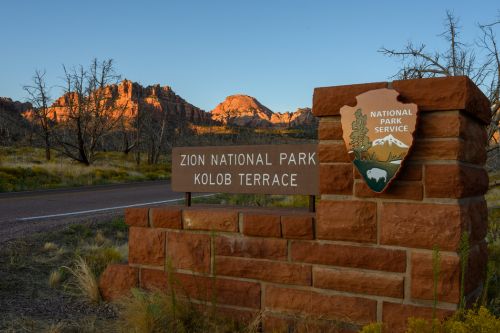

- Kolob Canyons: Located in the park’s northwest corner, Kolob Canyons offers a quieter and more remote experience. This area is known for its dramatic finger canyons, towering peaks, and stunning vistas. The Kolob Canyons Road provides access to several trailheads, leading to some of the park’s most spectacular views.
- Kolob Terrace: Another less-visited area, Kolob Terrace is situated at a higher elevation, offering cooler temperatures and sweeping views of the surrounding landscape. This area is also home to the famous Subway, a unique slot canyon that requires an exploration permit. You can apply for the hike on their website (here).
- The East Side: The eastern side of Zion is characterized by rolling hills, sandstone formations, and open desert landscapes. This area is less crowded and offers several scenic hikes, such as the Canyon Overlook Trail, which provides panoramic views of Zion Canyon.
How to Visit Zion National Park
General Information
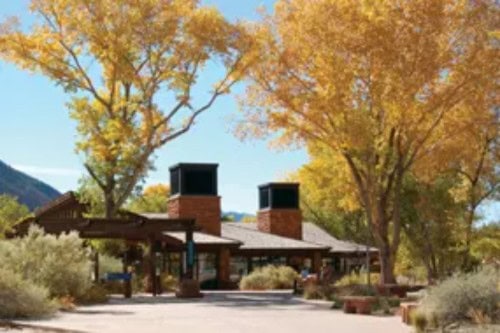
- Address: Zion National Park, 1 Zion Park Blvd, Springdale, UT 84767
- Open hours: 24/7 (Zion Canyon Visitor Center 8 a.m. – 7 p.m.)
- Contact: +1 435-772-3256
- Website: www.nps.gov/zion
Getting to Zion National Park
Zion is located in southwestern Utah, near the town of Springdale. The closest major airports are Las Vegas McCarran International Airport (about 170 miles away) and Salt Lake City International Airport (about 300 miles away). You can rent a car from these airports and drive to the park. The drive from Las Vegas takes about 2.5 to 3 hours, while the drive from Salt Lake City takes about 4.5 to 5 hours.
If you prefer not to drive, shuttle services and guided tours are available from Las Vegas and nearby cities. However, having your vehicle provides more flexibility when exploring the park and surrounding areas.
Entrance Fees and Passes
As of 2024, the entrance fee for Zion National Park is $35 per vehicle and $20 per person without a vehicle. The pass is valid for seven days. If you visit multiple national parks, consider purchasing the America the Beautiful Pass. This pass costs $80 and allows you to access all U.S. national parks and federal recreation areas for one year. Check out their website for more information, such as how to get a pass, the payment method, and free entrance days.
Zion Canyon Shuttle System
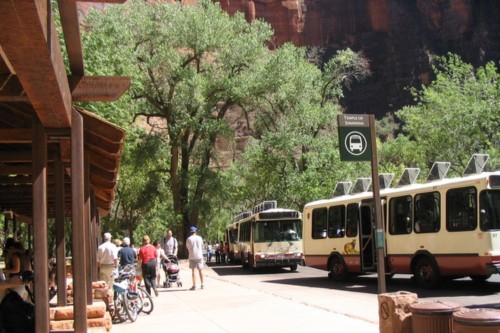
During the peak season, from March through November, Zion Canyon Scenic Drive is closed to private vehicles to reduce traffic congestion and protect the park’s environment. Instead, the park operates a free shuttle system that takes visitors to the main trailheads and points of interest in Zion Canyon. The shuttle runs frequently (5 – 10 mins), making it easy to hop on and off as you explore the park.
The shuttle starts at the Zion Canyon Visitor Center and stops at various locations, including the Zion Lodge, The Grotto, and the Temple of Sinawava. Each shuttle stop provides access to different hiking trails and scenic viewpoints. The shuttle is wheelchair accessible, and pets, except service animals, are prohibited.
The National Park Service (NPS) updates its shuttle schedules and campground availability based on the season each year, so be sure to check their latest information here.
Tips for Using the Shuttle
- Arrive Early: The shuttles can get crowded, especially during peak season. Arriving early in the morning will help you avoid long lines and secure a spot on the first shuttles of the day.
- Plan Your Route: Review the shuttle map and decide which stops to visit. The shuttle drivers provide helpful information about each stop, so don’t hesitate to ask questions.
- Don’t wait for the last shuttle of the day: If it’s full or you miss it, you could walk nine miles back to the Zion Canyon Visitor Center.
Other Transportation Options
If you’re visiting outside the shuttle season (from March through November) or exploring areas of the park not served by the shuttle, you can drive your vehicle to other trailheads and scenic areas. The Kolob Canyons and Kolob Terrace areas are accessible by car year-round, offering a quieter and more serene experience compared to the bustling Zion Canyon.
Things to Do in Zion National Park
Hiking
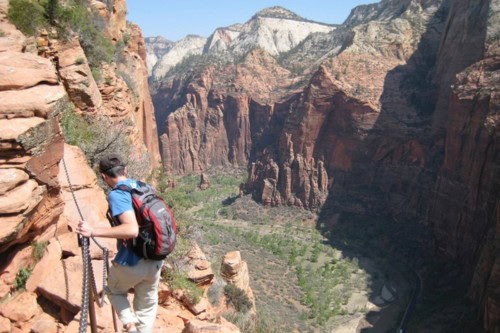
Zion is famous for its diverse and scenic hiking trails, ranging from easy walks to challenging scrambles. Here are some of the must-do hikes in the park:
- Angels Landing: This iconic hike is one of the most famous in the United States, known for its thrilling ascent and breathtaking views. The trail is a 5.4-mile round trip and involves a steep climb with narrow sections and sheer drop-offs on both sides. The reward is a panoramic view of Zion Canyon that will leave you in awe. Note: To hike Angels Landing, you need a permit, which you can obtain through a lottery system.
- The Narrows: Another signature hike, The Narrows, takes you through the Virgin River as it winds through a narrow slot canyon with towering walls on either side. The hike begins at the Temple of Sinawava shuttle stop, where you can wade into the river and follow it upstream. Depending on the water level, you may need to swim through river sections. The Narrows can be done as a day hike or as a longer backpacking trip with a permit.
- Observation Point: For those seeking a less crowded alternative to Angels Landing, Observation Point offers equally stunning views with less exposure. The trail is an eight-mile round trip and involves a steady climb to the summit, where you’ll be rewarded with expansive views of Zion Canyon and beyond. The hike is challenging, but the sense of accomplishment and the view from the top make it well worth the effort.
- Emerald Pools: This series of three pools (Lower, Middle, and Upper) offers a variety of hiking experiences. The Lower Emerald Pool trail is a relatively easy, paved path suitable for families, while the Upper Pool requires a bit more effort and offers stunning views of the surrounding cliffs. The pools are fed by waterfalls that cascade from the cliffs above, creating a serene and picturesque setting.
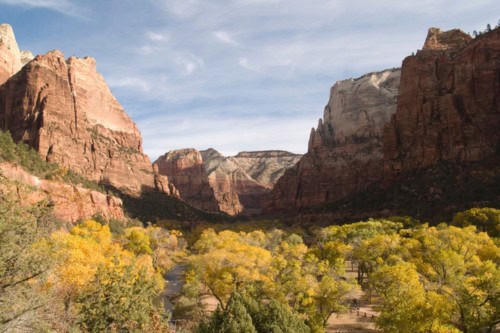
- The Subway: A bucket-list hike for many, the Subway is a unique slot canyon that resembles an underground tube. The hike requires route-finding skills, scrambling, and rappelling, making it a challenging adventure for experienced hikers. Permits are required, and the route is often done as a one-way hike with a shuttle.
- Canyon Overlook Trail: For a shorter and less strenuous hike, the Canyon Overlook Trail offers stunning views of Zion Canyon and the East Temple. It is only a one-mile round trip accessible from the Zion-Mount Carmel Highway. It’s a great option for families or those looking for a quick hike with a big payoff.
Scenic Drives
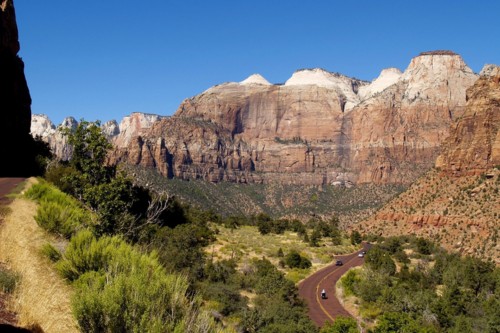
Zion offers several scenic drives that showcase the park’s diverse landscapes:
- Zion Canyon Scenic Drive: This 6-mile drive takes you through the heart of Zion Canyon, with views of towering cliffs, the Virgin River, and lush vegetation. The drive is closed to private vehicles during the peak season, but the shuttle provides easy access to all the major points of interest.
- Zion-Mount Carmel Highway: This 10-mile highway connects Zion Canyon to the park’s East Entrance, passing through the famous Zion-Mount Carmel Tunnel. The drive offers breathtaking views of sandstone formations, sweeping vistas, and unique rock features. The Checkerboard Mesa is a must-see stop along the way.
- Kolob Canyons Road: This 5-mile drive takes you through the lesser-known Kolob Canyons area, offering stunning views of the park’s finger canyons and towering peaks. The road is less crowded than Zion Canyon, making it a peaceful and scenic experience.
- Kolob Terrace Road: This scenic drive takes you to the higher elevations of Zion, offering cooler temperatures and panoramic views. The road provides access to several trailheads, including the Subway and the West Rim Trail. The drive is particularly beautiful in the fall when the foliage turns vibrant shades of red and orange.
Canyoneering
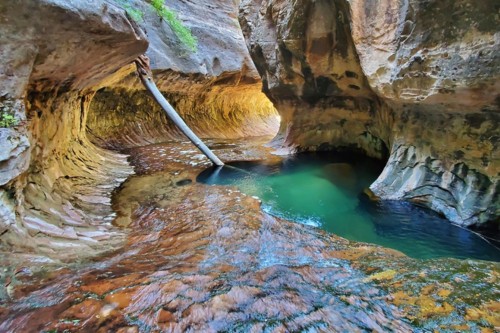
Zion is famous for canyoneering, an adventure sport where you descend narrow canyons using rappelling, swimming, and scrambling. The park’s slot canyons offer a variety of canyoneering routes, ranging from beginner-friendly to highly technical.
- The Subway: As mentioned earlier, the Subway is one of Zion’s most famous canyoneering routes. It requires permits and technical skills to navigate. The route involves rappelling, swimming through cold water, and scrambling over rocks, making it a challenging but rewarding experience.
- Orderville Canyon: This canyoneering route is a popular extension of The Narrows hike and offers a more adventurous experience. It involves downclimbing, wading through water, and navigating narrow passageways.
- Pine Creek Canyon: This technical canyoneering route is near the Zion-Mount Carmel Tunnel. It requires permits for rappelling and swimming through cold pools. The short but intense route offers a thrilling experience for those with a canyoneering experience.
Wildlife Viewing
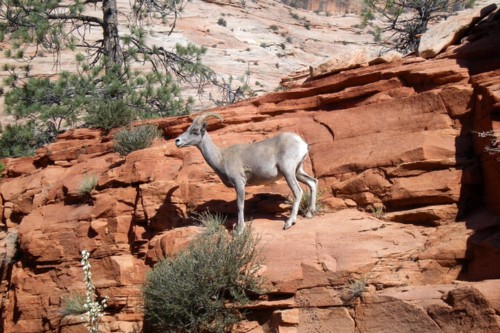
Zion is home to diverse wildlife, including mule deer, bighorn sheep, and mountain lions. Early morning and late afternoon are ideal for spotting wildlife, especially in quieter spots like Kolob Canyons and the East Side. Birdwatchers will find plenty to enjoy in the park, spotting species like peregrine falcons, California condors, and the striking red-tailed hawk.
Photography
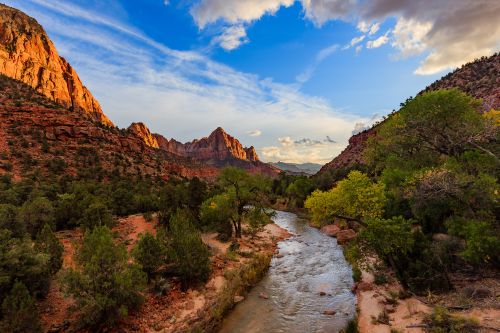
Zion National Park is a photographer’s paradise with endless opportunities to capture its stunning landscapes. The golden hour is the best time for photos after sunrise and before sunset. The soft light makes the sandstone cliffs look amazing and creates cool shadows. Popular photography spots include the Zion Canyon Overlook, the Towers of the Virgin, and the Watchman.
Ranger Programs and Visitor Centers
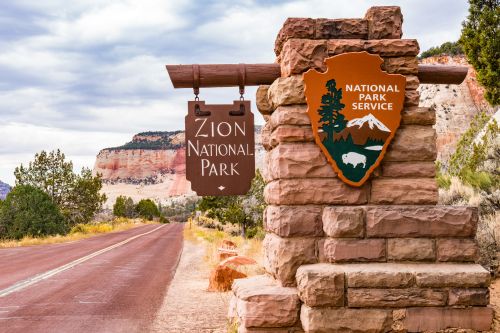
The park offers a variety of ranger-led programs and activities, including guided hikes, evening talks, and educational exhibits. You can check them out at the Zion Canyon Visitor Center and the Human History Museum. These programs provide valuable insights into the park’s geology, ecology, and cultural history. Check out their website for more details.
Tips for Visiting Zion National Park
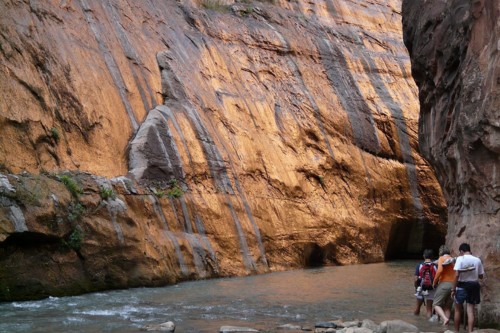
- Start Early: Zion is a top national park in the U.S., so starting your day early will help you avoid the crowds.
- Stay Hydrated: The desert climate can be extremely dry, so bring plenty of water, especially if you’re hiking. Refill stations are available at the visitor center, and some shuttle stops.
- Dress in Layers: Zion’s temperatures can vary greatly throughout the day, especially in the higher elevations. Dress in layers to stay comfortable, and be prepared for cooler temperatures in the morning and evening.
- Check the Weather: Zion’s weather can be unpredictable, especially during the monsoon season (July to September), when flash floods are a risk. Always check the weather forecast before heading out, and avoid hiking in narrow canyons if rain is possible.
- Respect the Environment: Zion is a protected area, so follow Leave No Trace principles. Stay on designated trails, pack out all trash, and avoid disturbing wildlife.
- Consider Off-Season Visits: If you prefer a quieter experience, visit Zion from late fall to early spring. While the weather may be cooler, you’ll enjoy fewer crowds and a more peaceful atmosphere.
- Permits and Reservations: Some of Zion’s most popular hikes, such as Angels Landing and The Subway, require permits. Be sure to apply for permits well in advance, as they can be difficult to obtain. Additionally, if you plan to stay in one of the park’s campgrounds or lodges, make reservations as early as possible.
Zion National Park offers unparalleled beauty and diverse visitor experiences. Since the park is so large and packed with activities, it’s a good idea to plan and check its website for the latest updates; with some preparation and a sense of adventure, you’ll fully enjoy everything Zion offers.
